![]()
Road cycling is a brutal sport where the physical demands are relentless. Athletes must endure harsh weather, reckless fans, all the while the risk of a massive accident constantly lurks.
For photographer Kristof Ramon, who has been covering cycling for 15 years, he looks for photographic ways to convey the hardships that these men and women put themselves through. He tells PetaPixel that, over time, he became more interested in their journey rather than their victories.
“Covering their suffering became a theme for me” Ramon explains. “And that manifested in many forms. I started to focus on it more and more.”
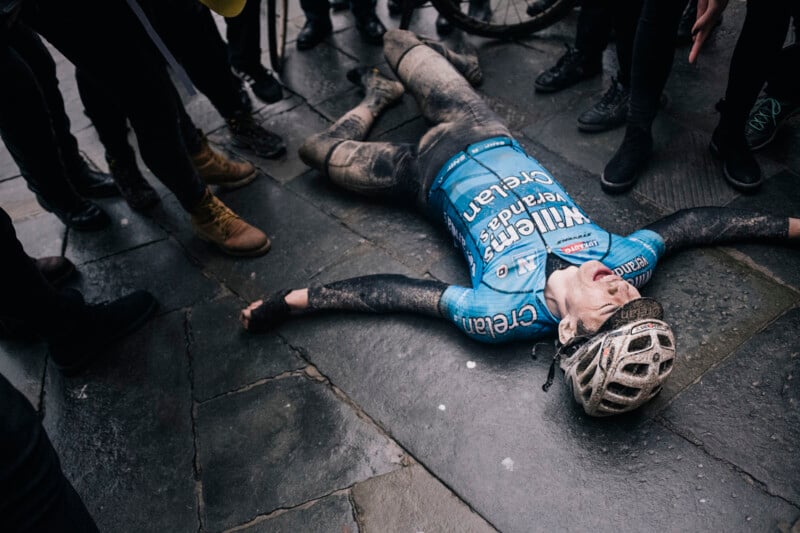
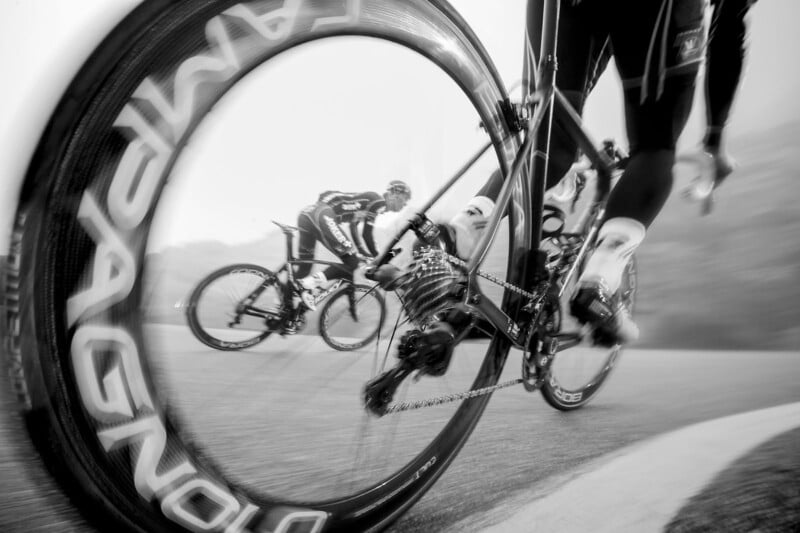
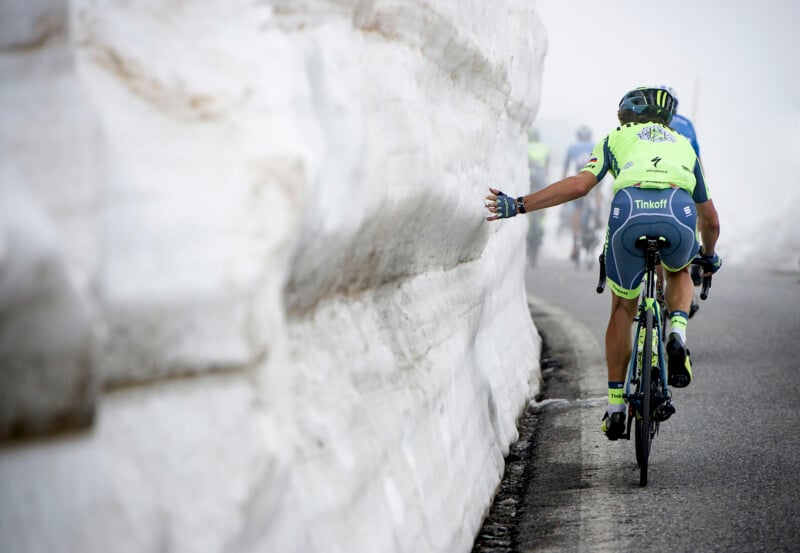
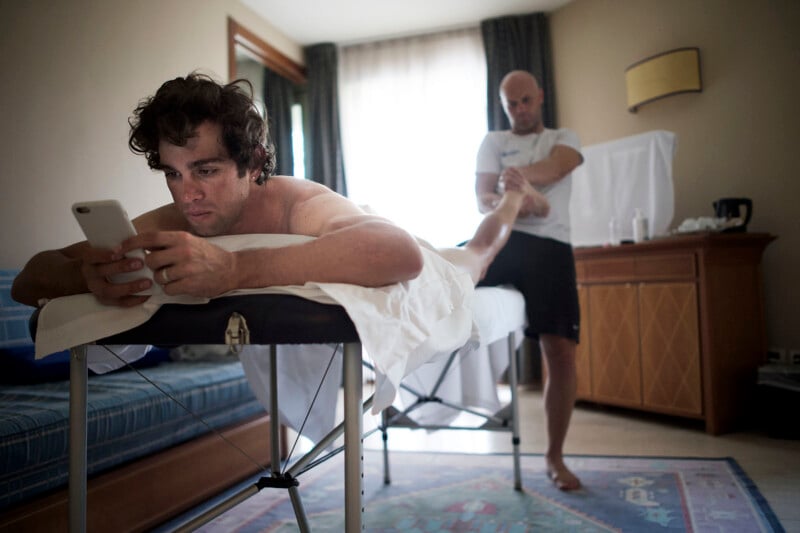
When the race is live, Ramon is focused on capturing moody action shots of the main contenders. But when the event is finished, he can switch to reportage mode.
“Following riders into their team buses, hotels, or on training rides,” he says. “This approach sparked my fascination with their dedication as they sacrifice so much to become the best endurance athletes.
“I understood quickly that a picture of a post-race-face sometimes shows more of the hardship the riders endure than an action shot from the race.”
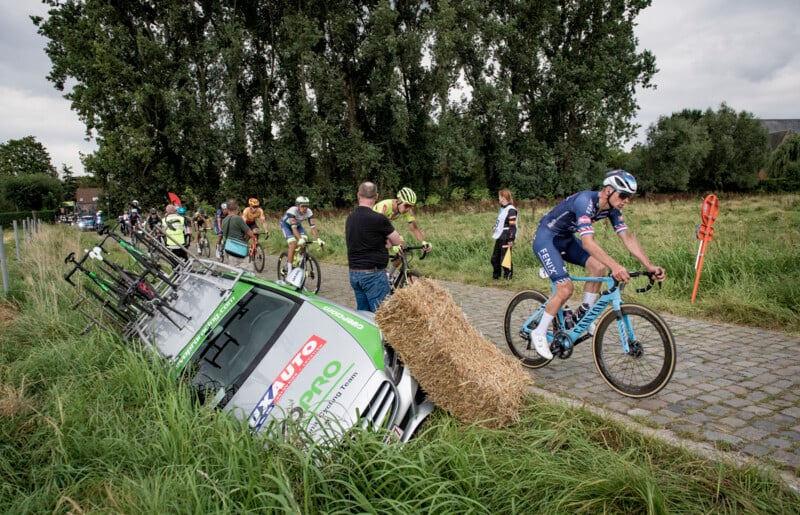
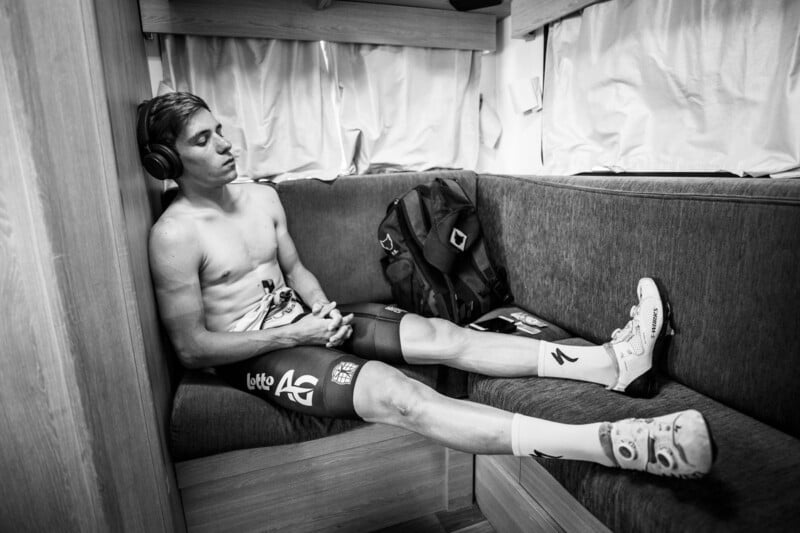
![]()
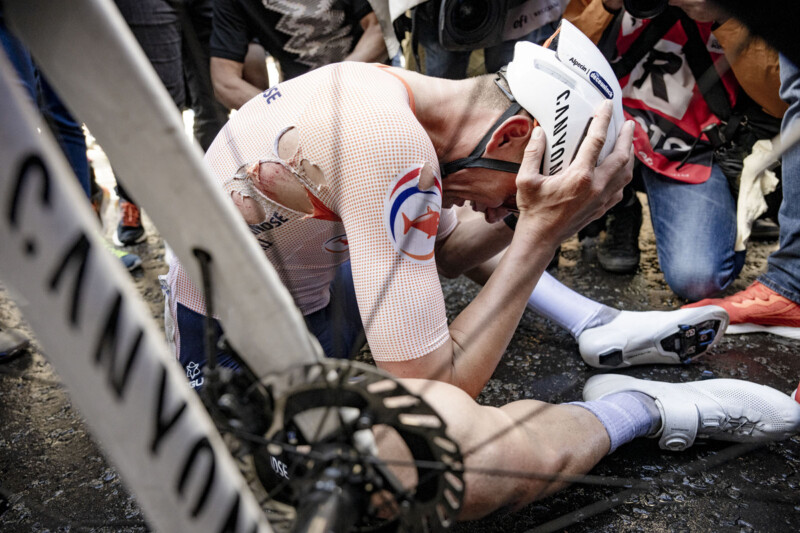
Ramon works as an independent photographer and is therefore free of some of the constraints that news agency photographers have when covering cycling. This has resulted in a new book titled The Art of Suffering.
“I have the freedom to shoot what fascinates me. With a (TV) career to fall back on, I didn’t need to compromise and was able to step away from more traditional sports coverage,” he says.
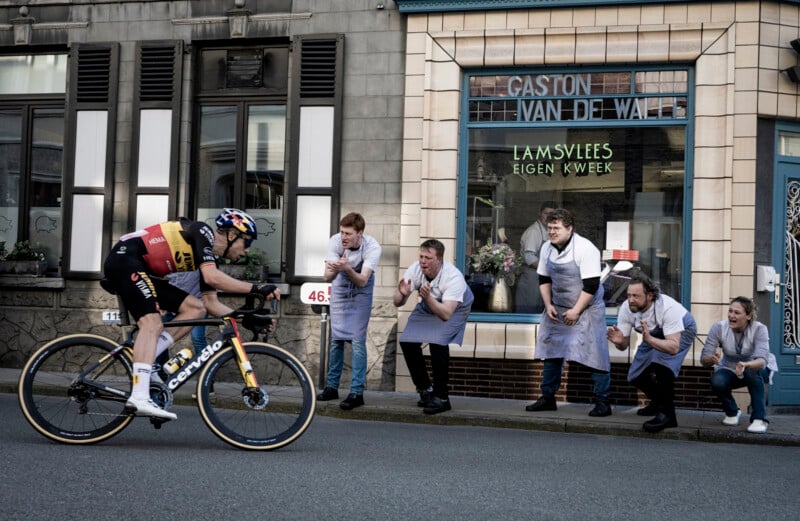
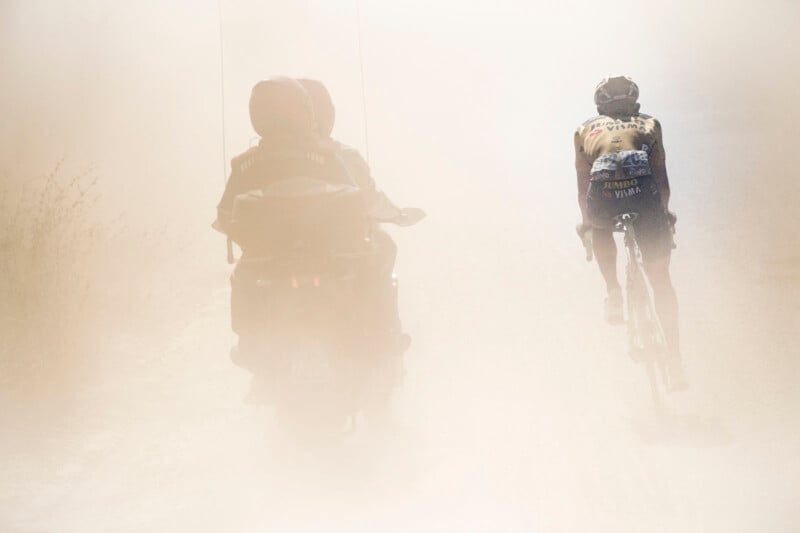
How Do Photographers Cover Road Cycling Races Like the Tour de France?
Cycling races can be anything from 100 miles (160 kilometers) long to 200 miles (320 kilometers) long while taking around four to seven hours. Ramon prefers shooting on the roadside where he has more control over the framing of his shot but sitting on the back of a motorbike allows for far greater mobility.
“The motorbike allows me to overtake riders, find shortcuts, and dodge crowds,” Ramon explains. “It’s a bit surreal that as a photographer I am actually working in the race at times, alongside the riders and while overtaking the peloton. I can’t think of any other sport where that’s the case.”
Roman says the back of a motorbike can make it very difficult to capture photos of the riders because of extreme conditions. However, those can often be the most striking shots; he describes the scenario as a “double-edged sword.”
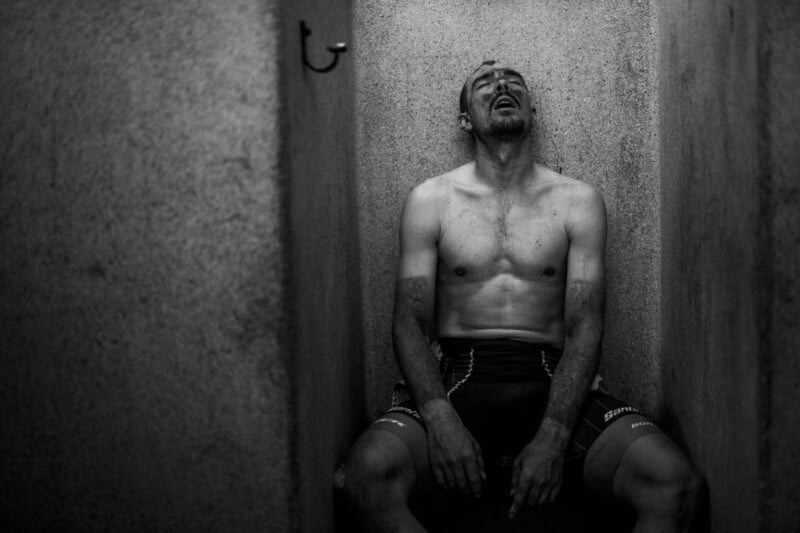
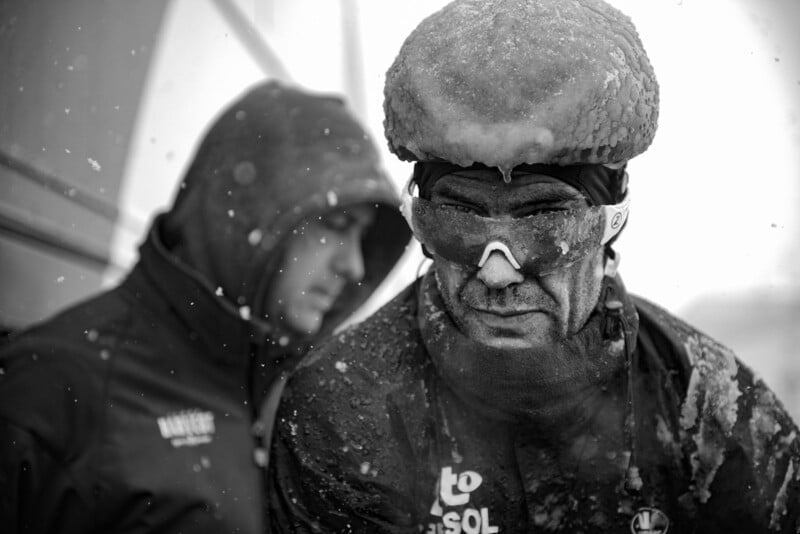
In competitive cycling, there are three Grand Tours with the most famous being the Tour de France which is run over three weeks. For those races, Ramon will use his car to get around the 21 stages.
“It’s less immersive than on the motorbike, but with the 21 stages, you usually get enough material to work with. Plus, I wouldn’t last for three weeks on the back of a moto.”
The incredible access that Ramon gets to the cyclists is one of the main draws for him and also part of the reason why he won’t be attending the Olympics that starts later this month in Paris.
“In some races like the World Championships or the Olympics, media motorbikes aren’t allowed or are heavily restricted,” he says.
“This makes it a lot harder to get around and we are much more restricted about where and when we can cover the race. It’s also one of the main reasons I’m skipping the Olympics; the access to the riders and races is simply too frustrating.”
Ramon’s The Art of Suffering is out now and can be purchased here. More of Ramon’s work can be found on his Instagram.
Image credits: Photographs by Kristof Ramon
